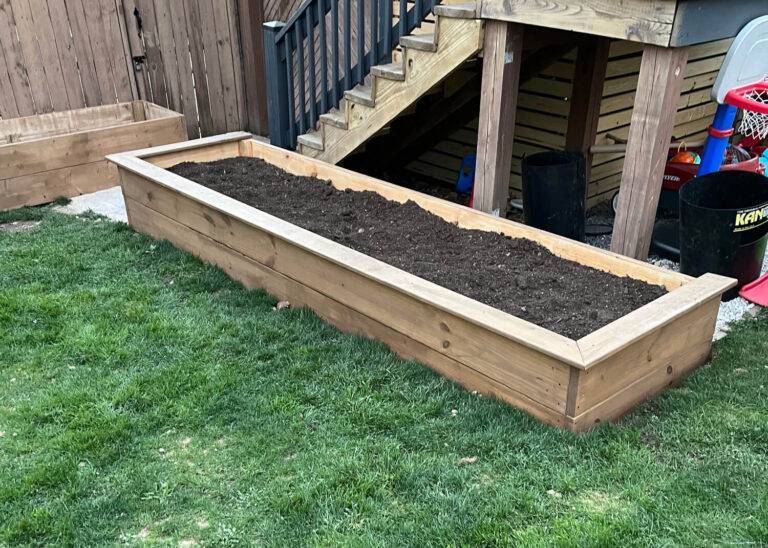Mastering the Art of Writing an Effective Bank Account Closure Application
Closing a bank account might seem like a mundane task, but did you know that it can have a significant impact on your financial well-being?
Table of Contents
ToggleWhether you’re bidding farewell to a savings account, checking account, or even a credit card, it’s crucial to master the art of writing an effective bank account closure application.
In this comprehensive guide, we will take you on a journey through the intricacies of closing your account. From understanding the importance of closure to expressing gratitude, we’ll equip you with the essential knowledge needed to navigate this process with ease.
So, let’s dive in and discover the secrets to crafting a compelling account closure letter that leaves a lasting impression.
Bank Account Closure Application Template
[Your Name] [Your Address] [City, State, ZIP Code] [Email Address] [Phone Number] [Date]
[Bank Name] [Bank Address] [City, State, ZIP Code]
Dear [Bank Name] Customer Service Team,
Subject: Closure of [Account Type]: [Account Number]
I hope this letter finds you well. I am writing to formally request the closure of my [Account Type] with [Bank Name], identified by the account number [Account Number]. After careful consideration and assessment of my financial situation, I have made the decision to close this account.
I would like to express my gratitude for the excellent services provided by [Bank Name] throughout my banking journey. Your dedication to customer satisfaction and commitment to delivering exceptional financial products have been greatly appreciated.
The reason for my account closure is based on personal reasons and a desire to consolidate my banking accounts. I believe this decision aligns better with my current financial goals and needs. I kindly request your assistance in initiating the closure process for my account.
Before proceeding with the closure, I have taken the necessary steps to address any pending transactions or outstanding balances associated with my account. I have reviewed my transaction history and ensured that all payments have been settled. If there are any remaining dues, please inform me so that I can arrange prompt payment and fulfill my financial obligations.
Please update my contact information as follows: New Address: [Your New Address] Phone Number: [Your New Phone Number] Email Address: [Your New Email Address]
I kindly request written confirmation of the account closure and termination of any associated services or products. This confirmation will serve as proof that the account has been successfully closed, providing peace of mind and facilitating the smooth transition to my new banking arrangements.
Once again, I would like to extend my heartfelt gratitude to the entire [Bank Name] team for your unwavering support and exceptional service. I look forward to your prompt assistance in closing my account. Please do not hesitate to contact me if you require any additional information or if there are any further steps I need to take to facilitate this process.
Thank you for your attention to this matter.
Sincerely,
[Your Full Name]
Note: It is important to remember that this is a template and should be customized according to your specific circumstances and the requirements of your bank.
Why Close a Bank Account?

Closing a bank account is a significant financial task that individuals undertake for various reasons. It could be due to personal circumstances such as relocation, financial needs, or a desire to consolidate accounts.
By closing an account, you ensure that you no longer have any financial obligations or ties with that particular bank.
It is important to close accounts properly to avoid any future complications or fees.
By understanding the account closure process, you can navigate the necessary steps with confidence and peace of mind.
Know Your Account Details
Before writing your account closure letter, it is essential to gather all the necessary information.
This includes your account number, account type (savings, checking, or credit card), and any outstanding balance.
Having this information readily available will ensure that your closure request is processed smoothly and efficiently. Additionally, check your bank’s website or contact customer service to gather any specific requirements or documents needed for account closure.
Being prepared with required information will save you time and help avoid any potential delays in closing your account.
Salutation and Introduction
To start your account closure letter, address it to the bank’s customer service team or the appropriate department.
Begin with a polite salutation, such as “Dear [Bank Name] Customer Service Team.”
Introduce yourself and state your intention to close the account in a clear and straightforward manner.
Reason for Closure
In this section, explain the reason behind your decision to close the account. Whether it is due to personal reasons, finding better financial options, or changing banks, provide a concise explanation.
Request for Closure
Make a direct request to close your specific account type and number.
It is crucial to be specific to avoid any confusion.
Clearly state that you want the account to be closed and any associated services or products terminated. By requesting closure clearly, you help the bank understand your intentions and facilitate a smooth closure process.
Settle Outstanding Balances

Before closing your account, it is important to address any pending transactions or outstanding balances. Review your recent transaction history and ensure that all pending payments or obligations are settled.
This could include outstanding checks, pending direct deposits, or scheduled automatic payments.
By taking care of these financial responsibilities, you prevent any issues with your account closure and ensure a smooth transition to your new financial arrangements.
Communicating Payment Plans
If you have outstanding balances that cannot be settled immediately, it is important to communicate your payment plans to the bank.
In your closure letter, mention that you will clear all dues and provide a specific date by which the balance will be paid, if applicable.
This shows your commitment to fulfilling your financial obligations and helps maintain a positive relationship with the bank.
Update Your Contact Details
When closing your bank account, it is important to provide updated contact information to the bank. This includes your new address, phone number, and email address.
By providing accurate contact details, you enable the bank to reach out to you if any further information or clarifications are needed.
Additionally, updating your contact information ensures that you receive any final correspondence or account closure confirmation from the bank.
By keeping your contact details current, you maintain a smooth line of communication during the account closure process and beyond.
Request for Confirmation
In you closure letter, include a request for confirmation of account closure. Ask the bank to provide written acknowledgement that the account has been closed and any associated services or products have been terminated.
Requesting confirmation ensures that you have a record of the account closure and provides peace of mind knowing that the process has been successfully completed. It also serves as proof in case of any future discrepancies or misunderstandings.
Thanking the Bank

Take a moment to express gratitude for the services provided by the bank during your time as their customer. Thank them for their assistance, support, and the financial products they offered.
Expressing appreciation helps maintain a positive relationship and leaves a good impression, even when closing the account.
Acknowledge any positive experiences or benefits you received from the bank, such as excellent customer service or convenient banking features.
Reflecting on Account Experience
In this section, briefly reflect on your experience with the bank and highlight any positive aspects that stood out to you.
This could include mentioning specific instances where the bank exceeded your expectations, provided personalized support, or helped you achieve your financial goals.
Sharing these positive experiences not only shows your appreciation but also reinforces the positive relationship you had with the bank.
Sign Off
End your closure letter with a professional closing, such as “Sincerely” or “Best regards,” followed by your full name.
Beneath your name, include the date of writing the letter.
By providing a formal sign-off, you add a touch of professionalism and authenticity to your closure letter. Remember to use a legible signature if you are submitting a physical copy of the letter.
Proofread Your Letter

Before sending your closure letter, it is crucial to thoroughly proofread it for any errors, grammatical mistakes, or typos.
Read through the letter multiple times, paying attention to clarity, coherence, and overall effectiveness of your message.
You can also utilize online grammar and spelling checkers to ensure accuracy. A well-proofread letter reflects your attention to detail and professionalism.
Conclusion
Congratulations on mastering the art of writing an effective bank account closure application! By following this comprehensive guide, you can confidently navigate the process and write a clear, professional closure letter.
Remember to maintain a friendly and polite tone throughout, as maintaining positive relationships with financial institutions is important. With proper structure, addressing pending transactions, providing updated contact information, expressing gratitude, careful proofreading, and following the bank’s submission instructions, you can ensure a smooth and efficient account closure process.
Best of luck with your account closure and thank you for being a part of our financial blog community!









This is a pretty cool page. One of the best posts I’ve come across in quite a while. I hope to see more content like this.